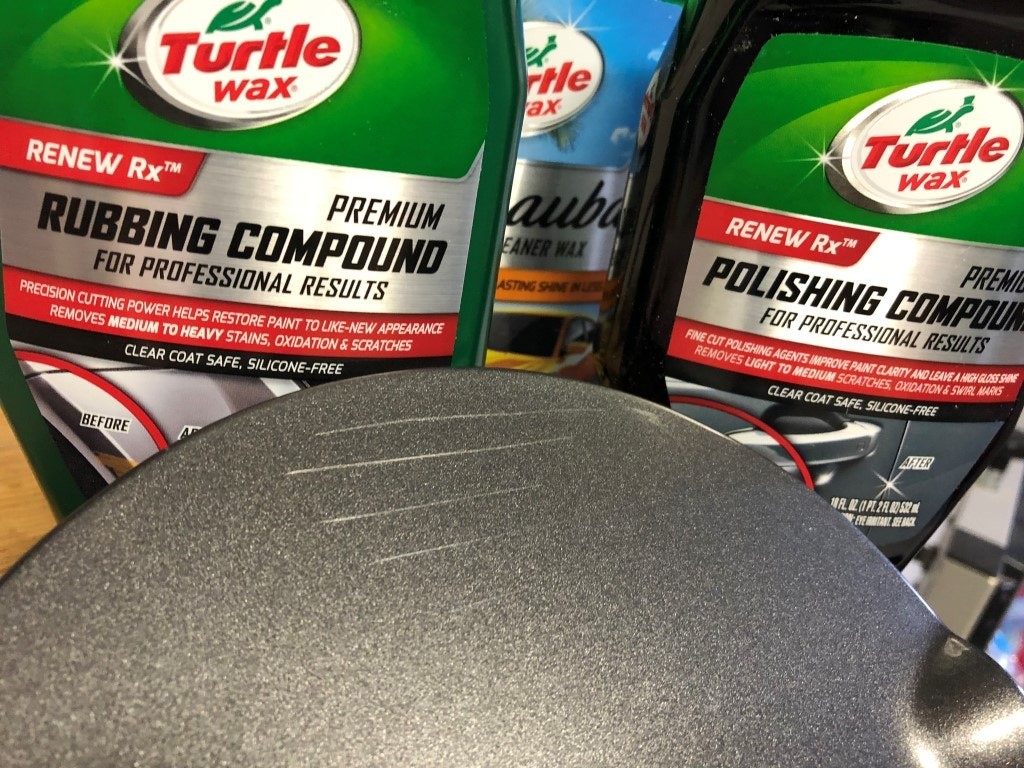Car scratches are an unfortunate reality for vehicle owners. Whether it’s a minor brush against a bush or a more noticeable key mark, scratches can detract from your car’s appearance and value. The good news is that for many minor scratches, polishing can be an effective solution. But can you polish out all scratches on a car? This guide will explore the capabilities of car polish and when you might need to consider more aggressive methods.
To understand what car polish can achieve, it’s important to first understand the nature of car scratches. Car paint typically consists of several layers: the clear coat, the color coat, primer, and the metal body. Most minor scratches only affect the clear coat, which is designed to protect the underlying paint.
Understanding Car Scratches and Polish
Car polish works by using mild abrasives to gently remove a thin layer of the clear coat. This process levels out the edges of the scratch, making it less visible and in many cases, completely disappear. Think of it like smoothing out a rough edge – the scratch is still there, but the light reflects more evenly, making it harder to see.
However, the effectiveness of polishing depends on the depth of the scratch. Here’s a breakdown:
-
Very Light Surface Scratches (Clear Coat Only): These are often called swirl marks or spider webbing and are typically caused by improper washing or drying techniques. You can often feel these scratches by lightly running your fingernail across the surface, but they don’t catch. Polishing is highly effective for these types of scratches and can often restore the clear coat to its original shine.
-
Moderate Scratches (Deeper into Clear Coat but Not Through): These scratches are more noticeable and you might feel them slightly with your fingernail. Polishing can still improve these scratches significantly, making them much less visible. However, depending on the depth, they might not be completely eliminated with polish alone.
-
Deep Scratches (Through Clear Coat and into Color Coat or Primer): If you can easily feel the scratch with your fingernail and it catches, or if the scratch is visible even when the area is wet, polishing alone will likely not be enough. These deeper scratches require more aggressive methods like sanding and potentially even paint touch-up.
Testing Polish Effectiveness: A Hands-On Experiment
To demonstrate the effectiveness of different polishing products, a test was conducted on a scratched car panel using various brands and techniques. The experiment started with lighter duty products from Turtle Wax, a readily available and budget-friendly option.
Turtle Wax Products: Light Duty Approach
The Turtle Wax range, including Rubbing Compound, Polishing Compound, Scratch & Swirl Remover, and Carnauba Liquid Wax, was tested first. These products are designed for ease of use and are applied by hand with a cloth. While these products offered some improvement on the lightest surface scratches, they were not very effective at removing even minor scratches under closer inspection.
Meguiar’s Products: Stepping Up the Game
Next, Meguiar’s Ultimate Compound, Polish, and Liquid Wax were tested. Applied by hand, these products showed marginally better results than Turtle Wax, but still struggled with anything beyond the very lightest scratches. The advice from experts was clear: for more noticeable scratches, machine application is often necessary.
The Power of Machine Polishing: Meguiar’s DA Power System
The game changed when a machine polisher, specifically the Meguiar’s DA Power System attached to a standard drill, was used. This tool provides an orbital motion, ensuring more even and effective polishing. With the machine polisher, lighter scratches became virtually invisible, demonstrating a significant improvement over hand application. However, moderate and deeper scratches still remained noticeable.
When Sanding Becomes Necessary: 3M Trizact Precision Scratch Kit
For deeper scratches that polishing alone couldn’t handle, the 3M Trizact Precision Scratch Kit was tested. This system involves a more aggressive approach: sanding down the clear coat. While sanding might sound intimidating, it’s sometimes necessary to level deeper scratches. The 3M kit includes sandpaper, rubbing compound, and polish, all designed for use with a drill attachment.
The 3M Trizact system, involving wet sanding followed by machine buffing with compound and polish, proved to be significantly more effective on moderate scratches. Light scratches were completely removed, and moderate scratches became almost invisible. Even deep scratches showed improvement, although they were still somewhat visible.
Conclusion: Polishing is a Great First Step, But Not a Universal Solution
In conclusion, Can You Polish Out Scratches On A Car? Yes, polishing is highly effective for light surface scratches and can significantly improve the appearance of moderate scratches. For deeper scratches that penetrate beyond the clear coat, polishing alone will likely not be sufficient. In these cases, more aggressive techniques like sanding, and potentially paint touch-up, are required.
Choosing the right approach depends on the depth and severity of the scratch. Start with polishing for minor imperfections, and if needed, consider stepping up to more intensive methods for deeper damage. Always remember to work in a controlled environment and test any product in an inconspicuous area first. With the right products and techniques, you can effectively tackle many car scratches and keep your vehicle looking its best.

